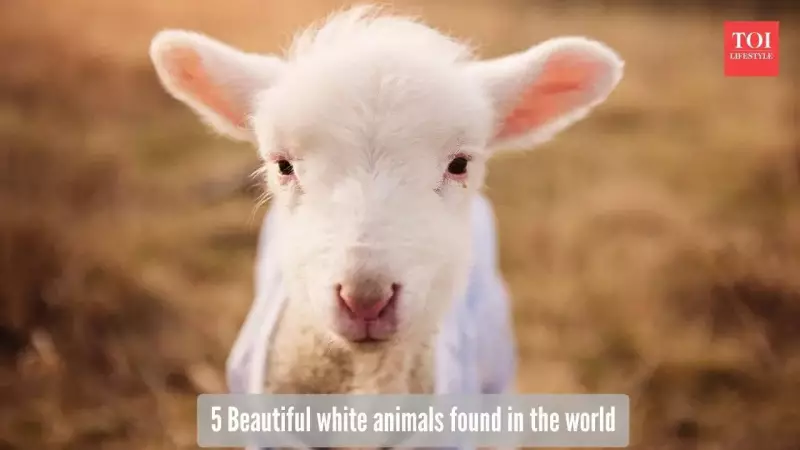
Nature's Fluffy Snowballs: A Glimpse into the World of White Animals
When we imagine creatures of pure white fur, it often feels like stepping into a magical animated film. However, nature itself is the greatest artist, blessing our planet with animals adorned in brilliant white coats. These stunning creatures, often found in icy habitats, use their bright coloration as a perfect camouflage in snowy environments. Let's explore five such beautiful white animals that look exactly like living, breathing snowballs.
The Masters of Winter Camouflage
These remarkable animals have evolved over centuries to survive in some of Earth's harshest conditions. Their white coloration isn't just for beauty—it serves as critical protection against predators and helps them hunt more effectively. The transformation in their appearance with changing seasons demonstrates nature's incredible adaptability and artistry.
Arctic Hare: The Winter Wonder
The Arctic hare develops an exceptionally thick, pure white winter coat that allows it to disappear completely into snowy landscapes. This dense fur serves dual purposes: creating that adorable snowball-like appearance while providing essential insulation against freezing arctic temperatures. When seasons change, this clever animal's fur shifts to a grayish-brown hue, perfectly matching the rocky tundra of warmer months. The Arctic hare stands as a remarkable example of evolutionary adaptation to extreme environments.
Snowy Owl: The Arctic Monarch
Known for its majestic presence, the snowy owl boasts dazzling white plumage that blends flawlessly into its arctic homeland. Unlike most owl species that hunt at night, snowy owls primarily search for lemmings and other small mammals during daylight hours. Their bright yellow eyes create a striking contrast against snowy white feathers, while their large, rounded bodies covered in thick plumage give them that characteristic snowball appearance. This insulation is crucial for surviving the brutal arctic cold.
Mountain Goat: The Cliff Dweller
Inhabiting the steep, rocky mountains of North America, mountain goats wear dense white coats that resemble natural snowball attire. This thick fleece provides vital insulation during harsh winters and helps them blend into snowy cliffs, offering protection from predators. Their powerful, muscular build enables them to scale seemingly impossible vertical surfaces with astonishing agility. Both males and females sport sharp black horns that create a beautiful contrast against their fluffy white fur, making them appear like living snowballs perched high on mountain peaks.
Arctic Fox: The Winter Phantom
The Arctic fox, a smaller cousin of the red fox, possesses extraordinary adaptations for surviving frigid temperatures. Its thick, plush white winter fur not only creates that perfect snowball appearance but also provides superior insulation against extreme cold. When summer arrives, the fox undergoes a remarkable transformation—its coat changes to a grayish-brown shade, allowing it to camouflage effectively within the tundra's rocky landscape. This seasonal adaptation demonstrates nature's ingenious survival strategies.
White Peacock: The Ethereal Beauty
Standing apart from its colorful relatives, the white peacock lacks the typical vibrant blues and greens due to a genetic variation called leucism. This condition dilutes pigment without making the animal a true albino. Native to India and found in aviaries worldwide, the white peacock's feathers gleam with an ethereal brightness. When it fans its spectacular tail, it creates an elegant, snowball-like spectacle that captivates all observers. Its graceful presence and unique coloring make it one of nature's most breathtaking creations.
Nature's White Wonders: More Than Just Beauty
These five white animals represent nature's incredible ability to adapt and thrive in specific environments. Their snow-white appearances serve crucial survival functions beyond mere aesthetics. From the arctic regions to Indian aviaries, these creatures continue to fascinate us with their beauty and resilience. The next time you see a image of these animals, remember that their white coloration represents millions of years of evolutionary perfection—true masterpieces of the natural world that deserve our admiration and protection.





